While Trello remains one of the most popular Kanban-based project management tools, many teams eventually hit its limits. As projects grow more complex, users start looking for deeper reporting, time tracking, dependencies, or automation that Trello doesn’t natively offer.
Finding the right Trello alternative isn’t just about features. It’s about collaboration tools, and how well the tool fits your team’s habits. If your boards are overflowing or power-ups are getting expensive, switching tools could bring clarity and save money.
In this guide, we’ll explore the top project management tools in 2026 that can replace Trello. But if you have any questions that are not covered in this article, you can always connect with our team via info@goodday.work
Best Trello alternatives shortlist for 2026
We tested the top Trello alternatives and put together a shortlist of powerful productivity tools.
| Software | Best for | Pricing | Ease of migration |
|---|---|---|---|
| GoodDay | Best overall balance of features & pricing | Free plan (1–15 users); Professional $4/user/month (annual); Business $7/user/month; Enterprise custom | Easy (CSV import, Zapier, manual tweaks) |
| Asana | Flexible task & project workflows | Free tier; Premium / Business tiers (e.g. ~$10.99/user/mo for Premium) (varies by billing) | Moderate (native importer, CSV, tool integrations) |
| Monday.com | Visual workflows, dashboard customization | Free for 2 users; Basic $9/user/mo; Standard $12; Pro $19; Enterprise custom | Moderate to easy (native importer, built-in migration tools) |
| ClickUp | All-in-one workspace (tasks, docs, goals, etc.) | Free plan; Unlimited $7/user/mo; Business $12; Enterprise custom | Easy (dedicated importers, CSV, integrations) |
| Airtable | Structured data + workflow (database + views) | Free plan; Plus $10/user/mo; Pro $20; Enterprise custom | Moderate (CSV import, schema mapping, manual adjustments) |
| Microsoft Planner | Teams / Microsoft 365 users needing simple boards | Included with Microsoft 365 subscriptions (no standalone “Planner only” price) | Moderate (manual re-creation, API, exports) |
| Wrike | Teams needing structured reporting, resource management | Free / basic tier; Team around ~$10/user/mo; Business ~$24.80; Enterprise custom | Moderate to complex (often use migration services) |
| Jira | Agile / software development, backlog & issue tracking | Free tier for small teams; Standard ~$7.75/user/mo; Premium ~$15.25; Enterprise custom | Complex (migration tools exist; admin expertise often needed) |
| KanbanFlow | Simple Kanban + built-in Pomodoro timer | Free (core features); Premium $5/user/mo for advanced features | Easy (CSV, manual setup) |
| Notion | Blending docs, knowledge & lightweight task workflow | Free personal / small team; Plus $8/user/mo; Business $15; Enterprise custom | Moderate (CSV export/import, API) |
| Kanbanchi | Kanban inside Google Workspace | Essential $5.99/user/mo; lighter plan $3.97; Premium from ~$9.49+ | Moderate (CSV import, board re-creation) |
What is Trello and why consider an alternative for your business?
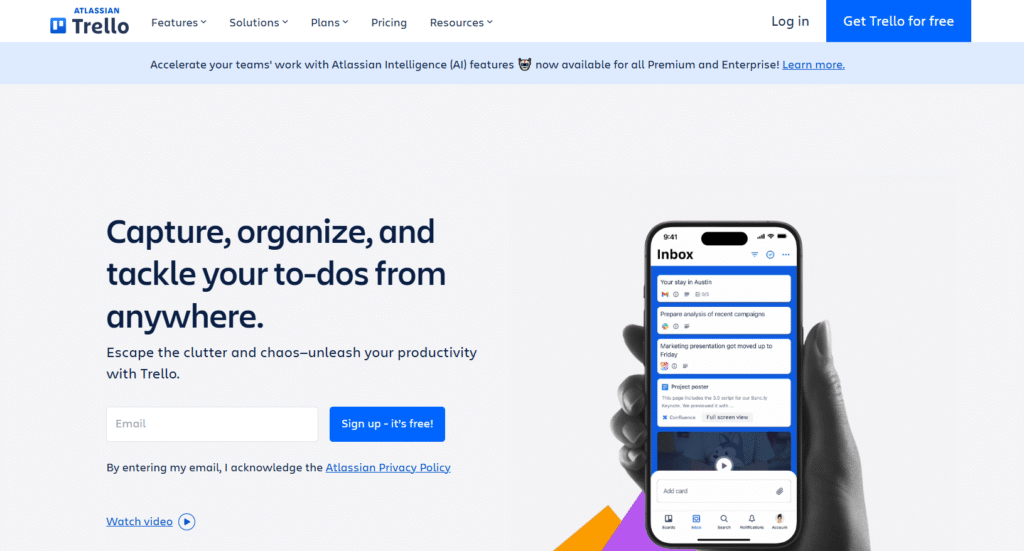
Image source: Trello
Trello is one of the most recognizable project management tools built around the Kanban methodology, a visual system that helps teams manage tasks through customizable boards, lists, and cards.
It’s known for its simplicity and intuitive drag-and-drop interface, making it easy for anyone to visualize project progress, assign tasks, and collaborate in real time. Trello integrates with hundreds of third-party tools through “Power-Ups” and suits individuals or teams who prefer a lightweight, visual approach to task management.
However, as teams and projects grow, Trello’s simplicity can become a limitation. Users often find themselves needing more advanced features such as time tracking, dependency management, detailed reporting, or native automation that go beyond Power-Ups or paid add-ons.
Businesses in 2026 are increasingly looking for tools that combine Kanban visualization with deeper functionality, such as integrated timelines, goals, analytics, or resource planning. Choosing the right alternative can help your team maintain the visual clarity Trello is known for while gaining better scalability, workflow control, and cost efficiency.
If your boards are becoming cluttered or you rely on too many Power-Ups, exploring a Trello alternative may save you time and bring more structure to your daily work.
In-depth exploration of the best project management software alternatives to Trello
Let’s take a look at the top Trello alternatives in 2026, so you can see which project management software option fits your team’s needs.
1) GoodDay
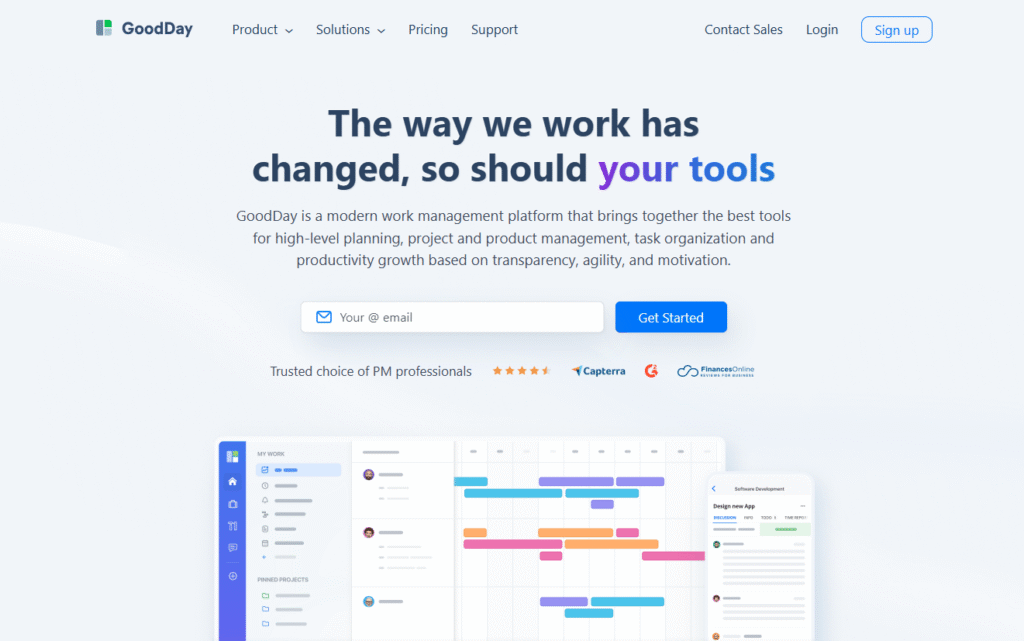
GoodDay is an all-in-one work management tool used by Fortune 500 companies, startups, and small teams around the world. It combines task tracking, project planning, goals, and reporting in one place. By switching from Trello to GoodDay, you can save up to 50% on your current software costs and migrate your data in just two minutes.
Why it’s a good Trello alternative:
GoodDay offers more flexibility and built-in features than Trello, without needing multiple add-ons. It includes everything from task tracking and reports to goals, documents, and time tracking. It’s also much more affordable, especially for growing teams. GoodDay is recognized as a top-rated tool in 12 Capterra shortlists.
Main features:
- Multiple project views: List, Board, Gantt, Calendar, Table, and more
- Built-in apps for meetings, notes, time tracking, and events
- Ready-made templates for different departments (marketing, IT, product, etc.)
- Full support for Waterfall, Agile, Scrum, Kanban, and other methodologies
- Advanced security and access controls
- Goal and KPI tracking
- Automations and custom workflows
Integrations:
GoodDay connects with over 15 popular tools, including Google Workspace, Slack, and Outlook. You can also use the open API or Zapier to create custom integrations for any workflow.
Pros and cons:
Let’s take a look at the key advantages and a few possible downsides.
| Pros | Cons |
| Trusted by 100,000+ teams worldwide; strong reputation in 2026 | Advanced reporting requires extra setup |
| Excellent usability and responsive interface | Focuses on productivity, not social features |
| Rich mix of features for planning, execution, and tracking | Because nearly everything can be tailored, teams may spend extra time deciding on the perfect setup |
| No unnecessary upsells or feature bloat | Focused on productivity, not social features |
2) Asana
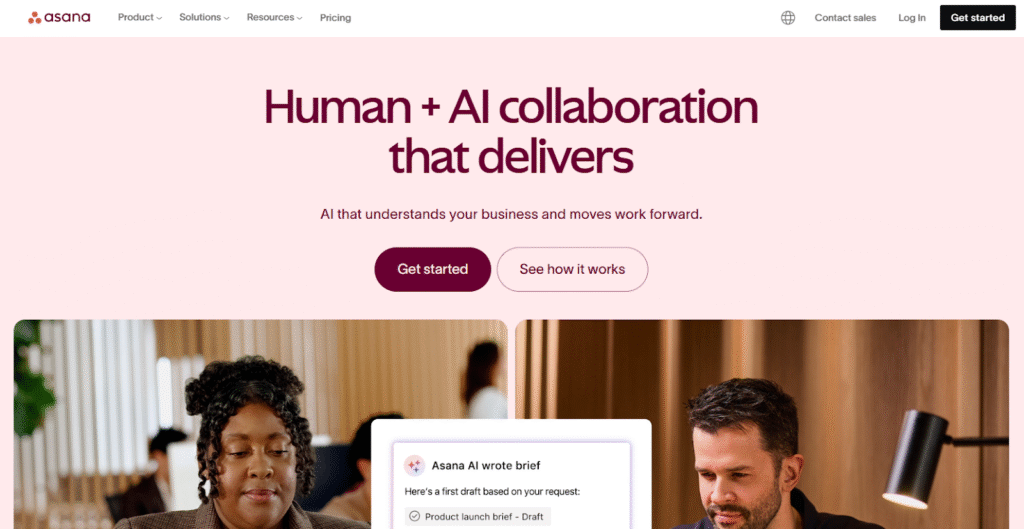
Image source: Asana
Asana is a task management tool built around complex projects and workflows. Teams can build tasks, subtasks, boards, timelines, custom fields, and dashboards. Asana aims to let teams scale from simple task lists to complex workflow orchestration.
Why it’s a good Trello alternative:
Asana offers more structure and richer views than Trello out of the box (timelines, portfolios, custom rules). For teams that start feeling limits in Trello’s simplicity, Asana gives more control, reporting, and workflow power.
Main features:
- Task & subtask management
- Multiple views: list, board, timeline, calendar
- Custom fields, forms, templates
- Rules / automation
- Goals / portfolios / reporting
- Workload & resource views
- Integrations & APIs
Integrations:
Asana integrates with many apps: Slack, Microsoft, Google Workspace, Salesforce, Zapier, Tableau, Power BI, and more.
Pros and cons:
Let’s look at strengths vs trade-offs:
| Pros | Cons |
| Richer views & structure than Trello | Can feel heavy / more features than needed for small teams |
| Strong ecosystem & integrations | Price climbs as you add users / features |
| Good automation & workflow tools | There’s a learning curve for best structure |
| Scalable from small to enterprise | Some advanced features locked behind higher tiers |
| Solid reporting, portfolio management | Customization may need setup effort |
3) Monday.com
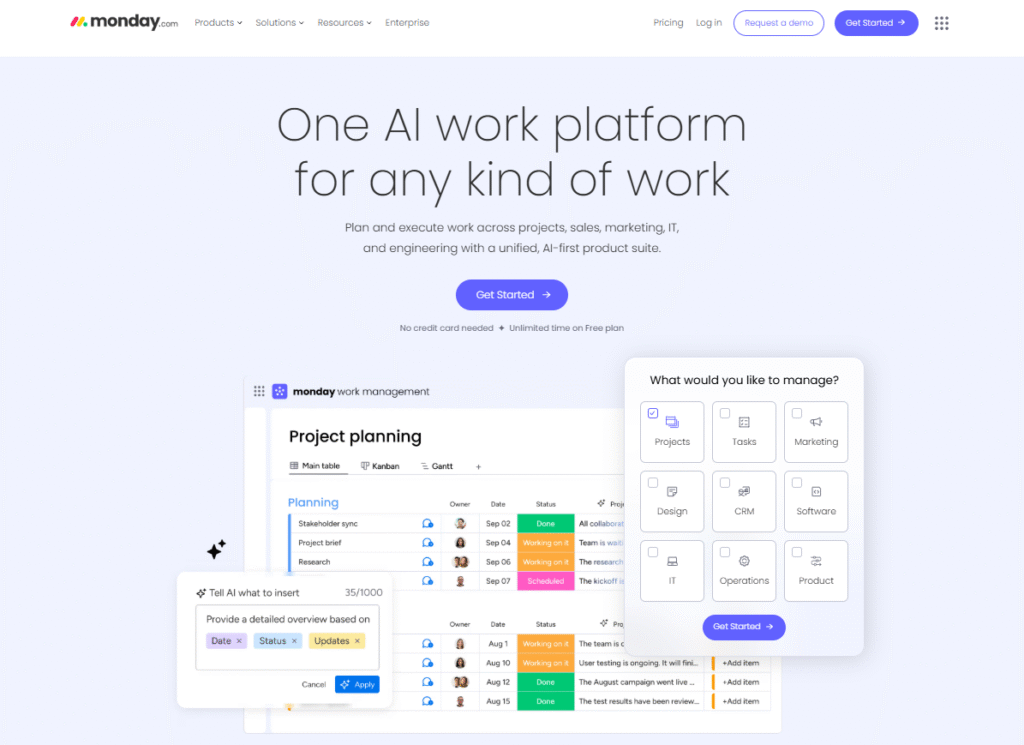
Image source: Monday.com
Monday.com is a flexible Work OS. Users build boards that represent workflows, then can layer dashboards, automations, and visual elements on top. It’s designed to adapt to many types of work (projects, operations, HR, etc.).
Why it’s a good Trello alternative:
It gives more flexibility and modularity than Trello while retaining visual appeal. Where Trello is mostly boards and add-ons, Monday.com lets you mix views, logic, and dashboards more natively.
Main features:
- Boards, tables, timelines, calendars, charts
- Automations & “blocks”
- Dashboards combining multiple boards
- Workload & resource views
- Custom fields, forms, templates
- Permissions, privacy controls
- Time tracking (in higher plans)
Integrations:
Monday.com integrates with Slack, Google Workspace, Microsoft, Salesforce, Zapier, among many others. It also has API support and automation “blocks” for enhanced connectivity.
Pros and cons:
Let’s explore all the advantages and disadvantages.
| Pros | Cons |
| Visually polished & user friendly | Free plan is quite limited |
| Very modular, you build what you need | Some advanced features only on higher tiers |
| Strong automation & integration ecosystem | Pricing scales fast with more users |
| Dashboards & cross-board visibility | Complex setups can become hard to manage |
| Good for scaling teams | Some overhead in configuration |
4) ClickUp
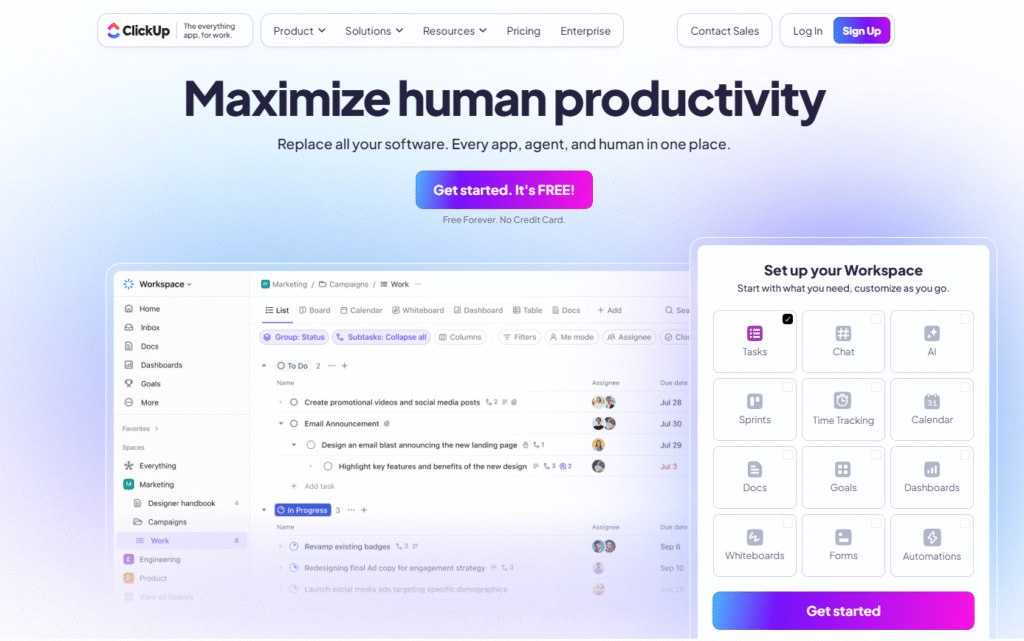
Image source: ClickUp
ClickUp is a consolidation tool: tasks, docs, goals, chat, dashboards, and more in one workspace. It offers a user-friendly interface and aims to replace multiple project management tools by bringing them under one roof.
Why it’s a good Trello alternative:
ClickUp builds on the visual simplicity of Trello but adds many features Trello lacks (docs, goals, dashboards, embedded collaborations). It allows teams to grow without jumping between tools.
Main features:
- Tasks, subtasks, checklists, dependencies
- Views: list, board, Gantt, calendar, timeline
- Docs / wikis embedded in workspaces
- Goals & OKRs
- Time tracking, estimates, timesheets
- Automations, templates
- Dashboards, custom reporting
- Comments, notifications, mentions
Integrations:
ClickUp connects with Slack, GitHub, Google Workspace, Microsoft, Zapier, and supports APIs / webhooks for custom workflows.
Pros and cons:
Let’s review all the strengths and weaknesses.
| Pros | Cons |
| Very feature rich, can replace many tools | May be overwhelming for small/simple teams |
| Good customization & flexibility | Performance / complexity issues in very large setups |
| Strong free plan | Some advanced features require higher tiers |
| Docs and tasks unified | Setup takes planning to get best results |
| Active development and frequent updates | Risk of over-configuring and confusion |
5) Airtable
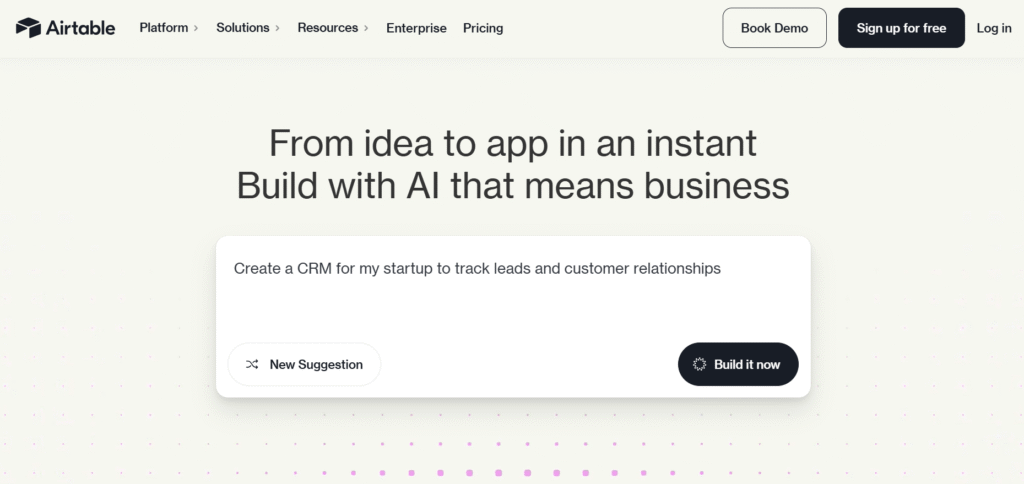
Image source: Airtable
Airtable is a hybrid between a spreadsheet and a database. You build “bases” and link tables, then view your data in grid, Kanban, calendar, gallery, etc. It suits data-rich workflows.
Why it’s a good Trello alternative:
Airtable gives you more structure and relational data power than Trello. For projects where each task has many attributes (assets, statuses, relations), Airtable helps you manage complexity more cleanly.
Main features:
- Relational tables / data linking
- Views: grid, Kanban, gallery, calendar, timeline
- Custom fields, formulas, rollups
- Forms for data entry
- Automations & scripting
- Apps / extensions (charts, maps, dashboards)
- Collaboration, permissions, sharing
Integrations:
Airtable integrates with Slack, Outlook, Google Workspace, Zapier, Make, etc. Plus API and scripting support allow advanced custom workflows.
Pros and cons:
Let’s examine all the pros and cons in detail.
| Pros | Cons |
| Excellent for structured, attribute-rich workflows | Not optimized for strict project management (no full resource planning) |
| Flexible views, filtering, relational data | Can get complex / hard to maintain at scale |
| Strong formula, rollup capabilities | Automations often need scripting or addons |
| Good integration options | Performance issues for large datasets |
| Broad use cases beyond pure projects | Less “opinionated” guidance; you build much yourself |
6) Microsoft Planner
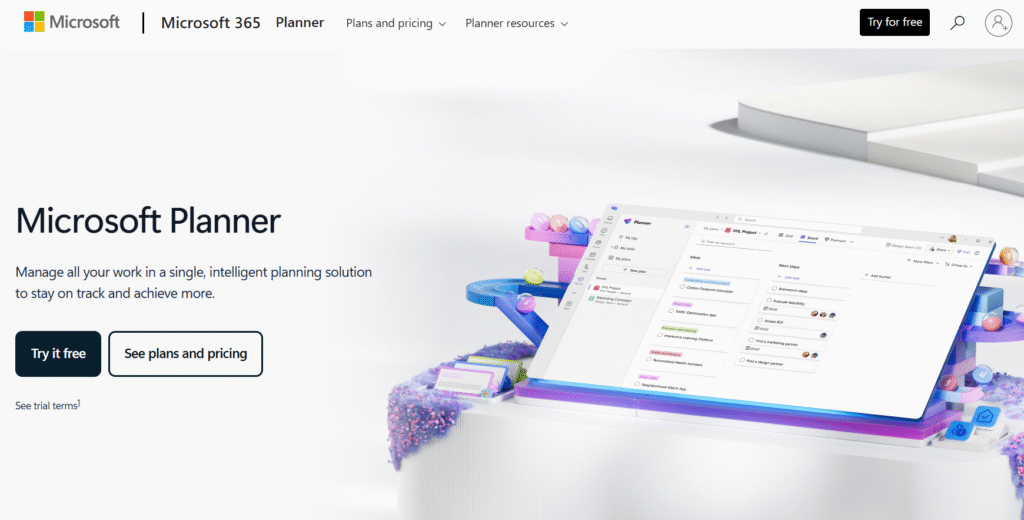
Image source: Microsoft Planner
Microsoft Planner is a lightweight task management tool for users inside the Microsoft ecosystem. It uses Kanban-style boards (“buckets”) and integrates with Microsoft 365 apps.
Why it’s a good Trello alternative:
If your organization already uses Microsoft 365 heavily, Planner is a natural fit (no extra cost) and gives simple visual task boards. It’s more integrated with Teams/Outlook than many third-party tools.
Main features:
- Task boards with buckets
- Task details: checklists, attachments, due dates
- Labels, assignments, progress tracking
- Integration with Teams, Outlook, Groups
Integrations:
Planner is deeply integrated into Microsoft 365: SharePoint, Teams, Outlook, To Do. It doesn’t have as many external integrations as standalone tools, but works well within Microsoft’s ecosystem.
Pros and cons:
Here’s a breakdown of the positives and negatives.
| Pros | Cons |
| No extra cost if you have Microsoft 365 | Very limited compared to full project tools |
| Seamless integration with Teams, Outlook, SharePoint | Lacks timeline, reporting, dependencies |
| Simple and familiar for Microsoft users | Not ideal for complex workflows |
| Low friction for adoption in MS environment | Minimal customization, fewer power features |
| Good for small to medium tasks in MS environment | Doesn’t scale well to large projects |
7) Wrike
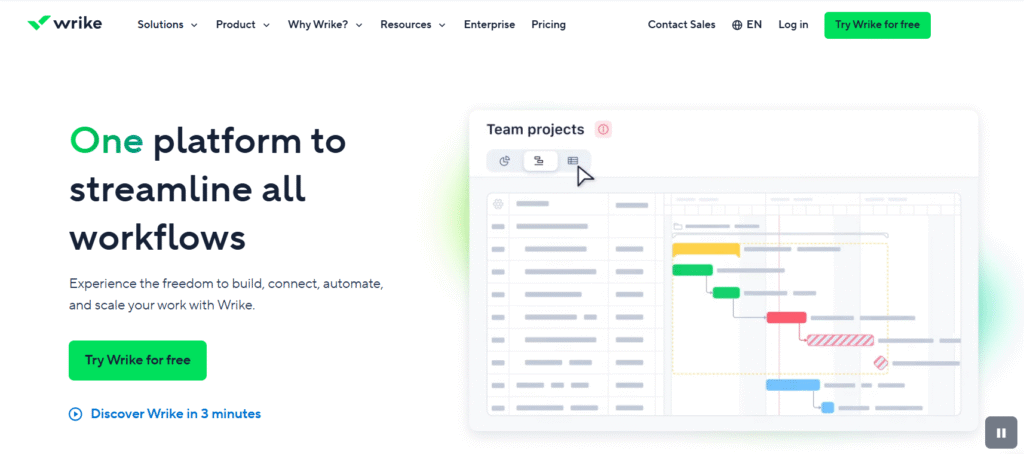
Image source: Wrike
Wrike is a project management platform built for structure and scalability. It offers folder/project hierarchies, dashboards, request forms, resource management, and reporting.
Why it’s a good Trello alternative:
Wrike offers more governance, power, and oversight than Trello. If you need more robust reporting, structure, and workflows, Wrike is designed for scaling teams where Trello becomes too basic.
Main features:
- Hierarchies: spaces, folders, projects
- Tasks, subtasks, dependencies
- Views: list, board, Gantt, dashboards
- Request forms / intake workflows
- Time tracking, workload & resource management
- Automation, custom item types, templates
- Advanced reporting, analytics
- Review cycles, proofing
Integrations:
Wrike supports 400+ integrations, through Wrike Sync, Wrike Integrate, API. Integrated with Google Workspace, MS, Adobe, Salesforce, BI tools.
Pros and cons:
Let’s weigh the pros against the cons.
| Pros | Cons |
| Strong structure and control | Setup and admin can be complex |
| Rich reporting and dashboards | Some features restricted to higher plans |
| Request workflows for intake | Learning curve for non-expert teams |
| Good scalability | Cost and overhead for large teams |
| Broad integration options | Lower plans may lack powerful resource tools |
8) Jira
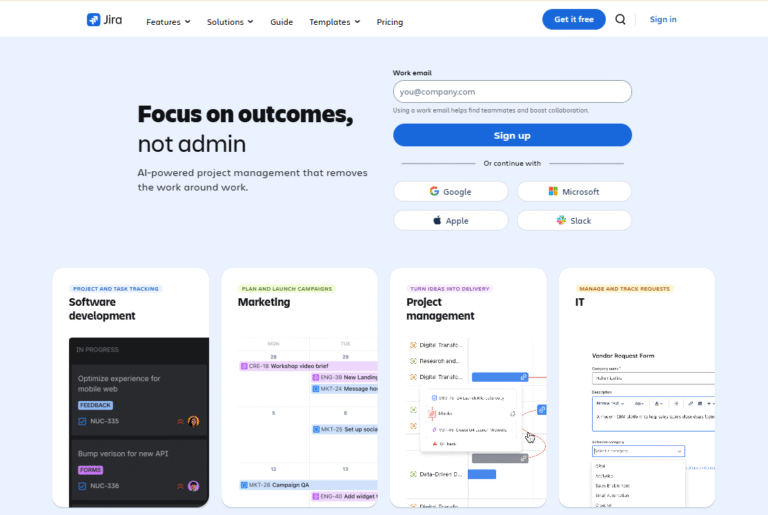
Image source: Jira
Jira by Atlassian is built for software development and Agile teams. It enables backlog tracking, sprints, issues, and custom workflows.
Why it’s a good Trello alternative:
For teams doing development, QA, or iterative work, Jira adds structure Trello can’t match (epics, backlog, releases). You get deeper project management control and integration with dev tools.
Main features:
- Issue / ticket tracking, sub-tasks
- Scrum & Kanban boards
- Sprints, backlog, releases
- Workflow customization, conditions, validators
- Roadmaps / epics
- Reporting: burndown charts, cumulative flow
- Permissions, roles, security
- Integrations with dev tools
Integrations:
Jira integrates tightly with Atlassian tools (Confluence, Bitbucket), CI/CD tools, GitHub, Slack, and many others via API and app marketplace.
Pros and cons:
Here’s an overview of all the pros and cons.
| Pros | Cons |
| Excellent for dev & Agile teams | Overkill for non-technical teams |
| Deep workflow customization | Steep learning curve |
| Strong developer integrations | UI less intuitive for general use |
| Robust reporting & metrics | Administration and maintenance overhead |
| Scalable | Cost and complexity grow with scale |
9) KanbanFlow
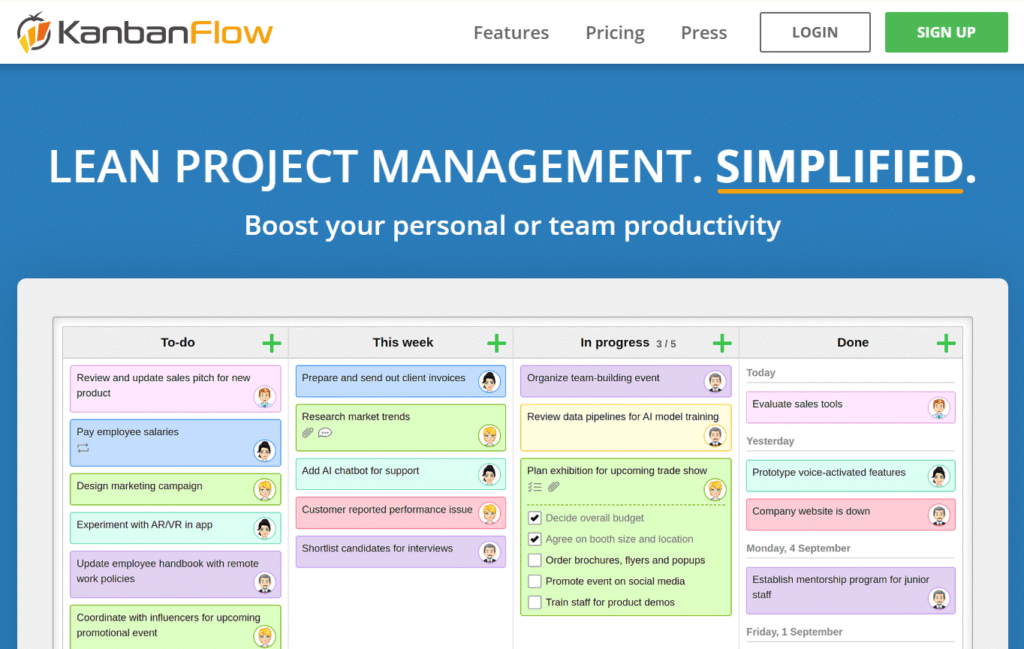
Image source: KanbanFlow
KanbanFlow is a simple Kanban tool with a built-in Pomodoro timer. It emphasizes getting things done with minimal distraction.
Why it’s a good Trello alternative:
If your primary need is a clean Kanban board with a bit of lightweight time management (Pomodoro), KanbanFlow gives you that with less complexity than many full project suites.
Main features:
- Kanban boards & columns
- Swimlanes, WIP limits
- Pomodoro timer built in
- Task detail: checklists, attachments, comments
- Basic analytics & cycle time charts
- Subtasks
Integrations:
KanbanFlow supports integration via Zapier and similar connectors. It’s lighter in external ecosystem compared to bigger tools.
Pros and cons:
Let’s check out the advantages and disadvantages.
| Pros | Cons |
| Very simple and focused | Lacks many advanced project features |
| Pomodoro built in (rare) | Not ideal for complex workflows or large teams |
| Low friction, low overhead | Limited customization |
| Good for individual or small team use | Weak reporting, no resource management |
| Clean interface | Integrations are basic |
10) Notion
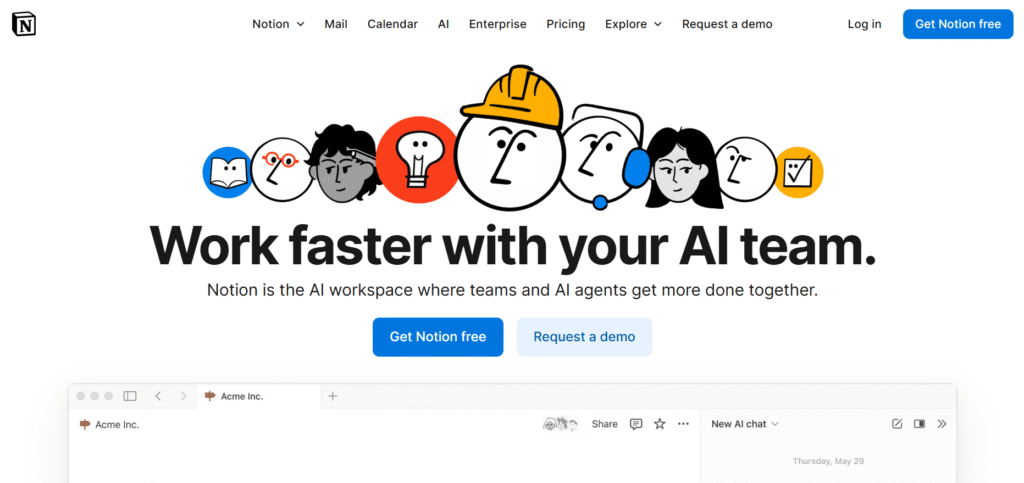
Image source: Airtable
Airtable is a flexible workspace combining docs, wikis, databases, and light task tracking. You build your own structure (pages, linked databases) rather than using rigid templates.
Why it’s a good Trello alternative:
For teams that need context, docs, and project tracking together, Notion blends the two. It allows you to build task boards linked with knowledge bases and docs, something Trello alone doesn’t do.
Main features:
- Pages, nested pages, rich content
- Databases / tables / linked views
- Kanban, calendar, gallery views
- Relations & rollups between tables
- Templates, custom properties
- Comments, mentions, collaborative editing
- Version history, permission controls
Integrations:
Notion integrates with Slack, Google Workspace, Figma, GitHub, Zapier, and offers a public API for custom integrations.
Pros and cons:
Let’s highlight the benefits and downsides.
| Pros | Cons |
| Extremely flexible, build your way | Requires building structure manually |
| Docs + project data in one place | Less baked-in project management features |
| Good for knowledge work & coordination | Performance can suffer with very large databases |
| Clean UI, highly adaptable | Automations often require third-party tools |
| Affordable for many teams | Setup effort needed to get full value |
11) Kanbanchi
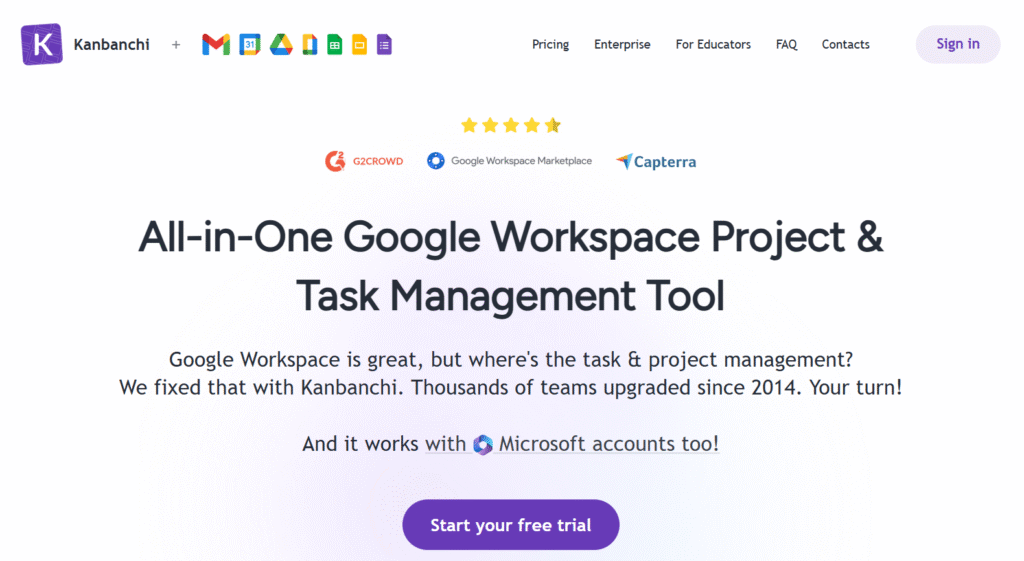
Image source: Kanbanchi
Kanbanchi is a Kanban & visual task tool built especially for teams using Google Workspace (and also integrates with Microsoft). Tasks are stored as files in Google Drive, making access and permissions align with your existing Google setup.
Why it’s a good Trello alternative:
Especially for teams embedded in Google Workspace, Kanbanchi brings Kanban + timeline + time tracking without leaving that environment. It’s a more integrated alternative than Trello for Google users.
Main features:
- Kanban boards with drag & drop
- Gantt / timeline view
- Time tracking
- Task cards: attachments, comments, checklists
- Real-time updates
- Reporting & dashboard
Integrations:
Kanbanchi integrates deeply with Google Workspace (Drive, Calendar, Gmail) and supports Microsoft integration for hybrid users.
Pros and cons:
Let’s summarize the pros and cons.
| Pros | Cons |
| Strong Google Workspace alignment | Might feel limited for non-Google environments |
| Adds timeline & time tracking to Kanban | Some advanced features behind premium |
| Easy adoption for Google users | Less mature ecosystem compared to large tools |
| Real-time collaboration & updates | Setup customization needed |
| Seamless file & permissions sync with Drive | May lack deep resource planning or analytics |
How to select Trello alternative for your business: main criteria
Choosing the right Trello alternative isn’t just about finding similar features, it’s about selecting a tool that supports your team’s specific goals, workflows, and growth plans. Below are the main criteria to consider before making your final decision.
Functionality
Start by evaluating whether the platform covers all your core needs: task management, time tracking, resource planning, automations, and reporting. Some tools, like GoodDay or ClickUp, offer a full work management suite, while others like KanbanFlow focus on simplicity. Identify which features your team truly needs to avoid overpaying for extras you’ll never use.
Usability
Even the most powerful system won’t work if your team struggles to use it. Look for a clean, intuitive interface, easy onboarding, and flexible navigation between project views (board, list, calendar, Gantt). A good Trello alternative should feel familiar yet provide smoother workflows and better customization.
Customer support
Check whether the vendor offers live chat, email assistance, help centers, and onboarding resources. Tools with active communities and responsive support teams (like GoodDay, Monday.com, or Wrike) tend to provide faster solutions.
Value for money
Compare pricing plans based on included features, not just the base price. Free or low-cost tiers might look attractive, but they often limit automation, integrations, or user seats. A truly valuable plan provides a good balance between affordability and functionality.
Customer reviews
Platforms like G2, Capterra, and Trustpilot offer transparent feedback about reliability, usability, and support. Reviews can highlight potential downsides that don’t appear in product descriptions, such as learning curves or performance issues, and help confirm if the tool is a good fit for your business.
Save up to 50% by switching from Trello to GoodDay
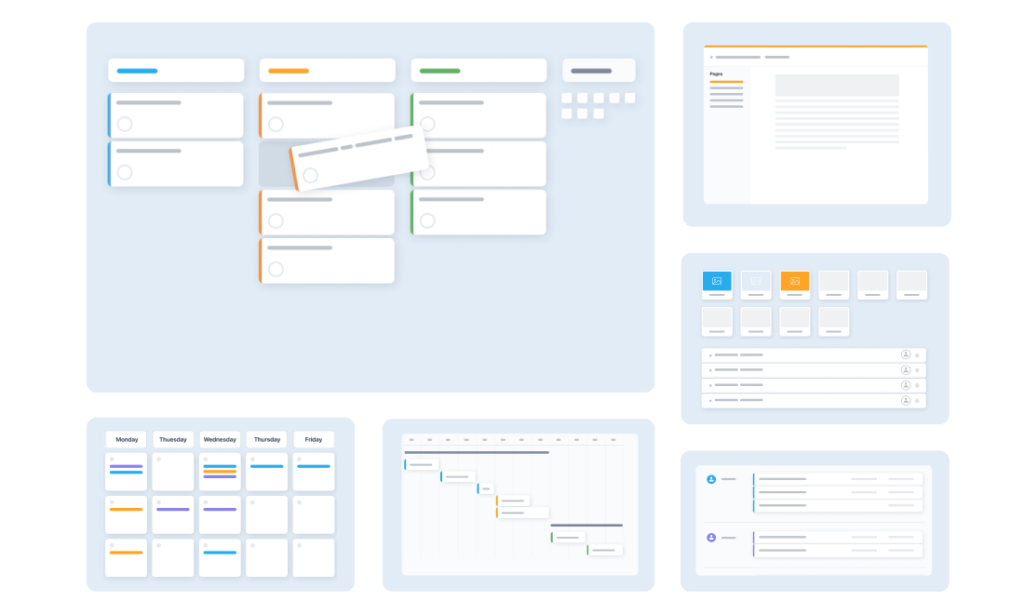
If you want the best mix of customization and price, GoodDay is often a top choice in 2026. It’s trusted worldwide for its robust features and budget-friendly plans.
You can try GoodDay for free to see how it fits your workflow, team, and daily rhythm.
But if you’re not sure which tool is the best match for your business, our team is always happy to help, just reach out to us at info@goodday.work
FAQs about best Trello alternatives
What is the best alternative to Trello?
For all-in-one project management, GoodDay and ClickUp are excellent options, offering task tracking, dashboards, automations, and goal management. Asana and Monday.com are also popular for structured workflows and team collaboration. If you prefer simplicity and Kanban-style boards, KanbanFlow or Kanbanchi are strong contenders.
What is the Google equivalent of Trello?
Google Workspace doesn’t have a direct Trello copy, but Google Tables (now part of Google Cloud’s Area 120 projects) and Kanbanchi integrate closely with Google Drive, Gmail, and Calendar. Kanbanchi acts as a Google-friendly Kanban board, while tools like Google Keep or Google Tasks provide lightweight task tracking.
Which project management tool is best for sales teams?
Sales teams often prefer a project management tool that connects task tracking with CRM workflows. Tools like GoodDay and Monday.com allow teams to manage pipelines, automate follow-ups, and collaborate on deals in one workspace. They also integrate with email and analytics platforms to streamline communication and reporting. For fast-growing sales teams, these options provide better visibility and coordination than Trello alone.
What other Trello alternatives offer more features for complex projects?
If your workflows go beyond basic Kanban boards, other Trello alternatives like GoodDay, ClickUp, Wrike, or Asana deliver more features such as Gantt charts, dependencies, and resource management. These platforms are better equipped for complex projects that involve multiple departments or clients. They combine structure, automation, and analytics for full lifecycle control. Each project management tool offers a paid plan that unlocks advanced reporting and scaling capabilities.
Do any tools mentioned include built-in time tracking and calendar view?
GoodDay, ClickUp, and Wrike offer built-in time tracking and an integrated calendar view. This helps teams track project progress and manage deadlines visually. The combination of time logs and calendar scheduling ensures accountability for every deliverable. These productivity tools make daily planning and performance monitoring much smoother than using separate apps.
Which great Trello alternative supports Kanban boards and Gantt charts together?
A great Trello alternative like GoodDay or Monday.com combines Kanban boards with Gantt charts for teams that need both visual flexibility and timeline control. You can switch between views to manage priorities and long-term planning easily. This dual setup benefits engineering teams and small businesses handling layered workflows. It’s ideal for tracking complex processes with clarity.
What are the best project management tools with a free version and starter plan?
Top project management tools like Asana, ClickUp, and GoodDay provide a free version for smaller teams and a starter plan for scaling. The free tiers often include essential task management, to-do lists, and Kanban view options. Upgrading to paid tiers unlocks other features like automations, integrations, and advanced reports. This flexible pricing allows users to grow their workspace affordably.
Are there project management software options that offer unlimited users?
Project management software platforms such as GoodDay and ClickUp allow unlimited users even in their entry-level tiers. This is valuable for large or distributed teams collaborating across departments. Combined with collaboration features and automation builder tools, these platforms scale effortlessly. The result is smoother coordination without needing extra licenses for every team member.
How can a highly customizable project management platform help to increase productivity?
A highly customizable workspace lets teams design views, forms, and automations that fit their real processes. This personalization makes it easier to track progress, prioritize to-do lists, and align daily tasks with business goals. GoodDay and Wrike are productivity tools that empower teams to define their own dashboards and metrics. Such flexibility drives motivation and helps in increasing productivity across projects.
Are there open source alternatives to Trello with collaboration tools?
Yes, some open source alternatives like Wekan and Restyaboard provide collaboration tools and scrum boards similar to Trello. While they may lack certain extra features of commercial platforms, they give full access to code and customization. These options suit teams with technical expertise who want to tailor workflows deeply. They can be a great alternative for developers managing client work or internal projects securely.
How do I choose the right Trello alternative for my business?
Begin by looking at functionality, usability, customer support, value for money, and your team size. Try free plans or trials to see which tool fits your workflow best. If you need guidance, our team at GoodDay is happy to help, you can always contact us via info@goodday.work
What is the best Trello alternative for small office?
GoodDay is the strongest Trello alternative for a small office because it offers built-in features like Gantt charts, time tracking, goals, and workload views without needing add-ons.
What is the best Trello enterprise alternative?
For enterprise teams, GoodDay provides advanced project controls, custom workflows, portfolio management, and deep analytics that Trello cannot match without multiple Power-Ups. It also scales cleanly across departments, making it a reliable long-term platform for complex organizations.
What is better than Trello?
GoodDay offers broader functionality. It combines ease of use with a full work management system that includes scheduling, reporting, automation, and resource planning. GoodDay removes the need for dozens of Power-Ups and gives teams everything in one platform, improving clarity and productivity.







